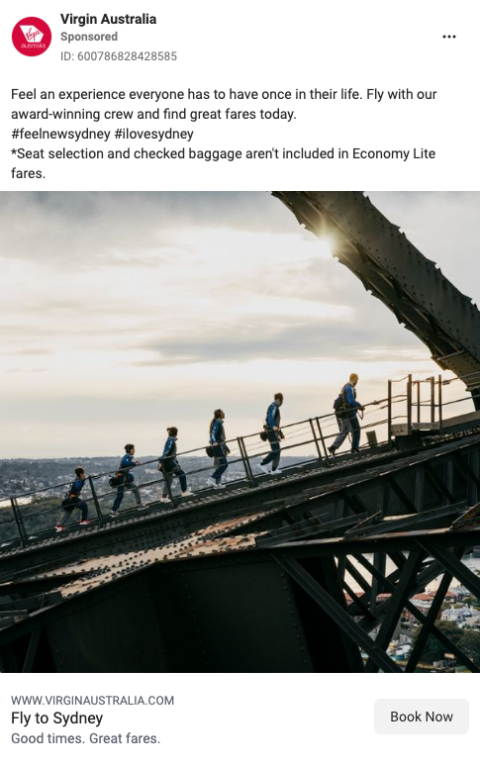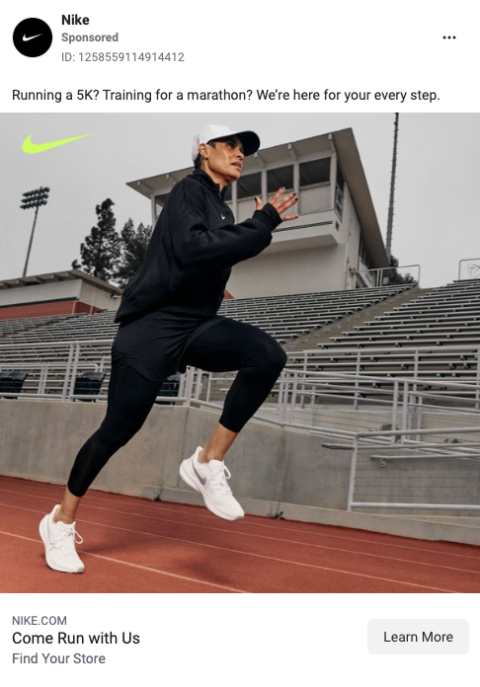9 Surefire Tips on How to Write Facebook Ad Copy That Converts
Some people still believe that Facebook ads are not a good channel to generate conversions, rather they generate lots of impressions and low-value clicks.
This bias stems from the fact that Facebook is still often seen as the platform people use primarily to connect with friends and family, rather than where we “do business”.
As a result, many brands underestimate the importance and potential of Facebook ads as a key acquisition channel.
In part, that’s because maybe we should start by better defining what a conversion is.
The problem is that too often we classify a conversion as the final step in the acquisition funnel – and therefore, for most, a conversion is a sale or transaction with associated revenue value.
However, the reality is that conversions – or rather, conversion points – can be much more, and to identify them we need to look beyond the sale or lead.
In the modern world – where the relationship between users and brands is very complicated due to the multiple ways and channels they can use to communicate and interact – each touch point is (or can be) as important as the last.
Therefore, every interaction can be defined as a conversion, which means savvy marketers and businesses need to plan, track, and measure accordingly.
Now that we have more clarity on what a conversion is, how can you make the most of the powerful medium of Facebook and create ads that convert?
We have nine proven tips that are guaranteed to help.
1. Thoroughly segment and frame the audience with AIDA
First and foremost, you should always use Facebook’s audience targeting features.
This requires mapping and planning your campaigns and ad sets to target diverse users with highly relevant ads that can grab their attention, spark genuine interest, convert that into desire and ultimately action.
When possible, smaller audiences allow you to create more relevant and compelling ad copy that resonates with your audience.
The trick here is finding the right balance between audience size and the platform’s ability to collect enough data for optimization.
However, the Attention, Interest, Desire, Action (AIDA) framework – which some refer to as “the four stages a consumer goes through before making a purchase decision” – should be what underpins your strategic approach and ties everything together.
2. Create audience personas and use them to define your (conversion) goals
Having a clear audience profile is always helpful, so whenever possible create personas that represent your key segments.
You need to understand what motivates your customers and what triggers you can use to get them to take action and convert.
What is your need? What is important to you?
And how can you help them?
Are you driven by emotions or are you more of a rational type resonating with numbers and facts?
By understanding and answering these questions, you can create ads and copy that are more effective and more likely to convert.
3. Use psychological triggers
Emotions move people.
We act because we have an intention, whether it’s to fulfill a need or for simple gratification, like entertainment.
But for that we need to make a connection. So we need a trigger.
In the example below, it’s difficult not to feel connected!
-
 Screenshot from Facebook Ad Library, June 2022
Screenshot from Facebook Ad Library, June 2022
One of the strongest triggers is also the fear of missing out (FOMO).
If needed, highlight such elements in your ad copy as scarcity, time-sensitive offers, or anything that might be too good to turn down.
4. Address your audience’s pain points and highlight the benefits you can provide
With a thorough understanding of your target audience, there is an opportunity to clearly address their pain points within the ad copy and highlight the benefits your solution will bring them.
When you’ve segmented and narrowed down your audience well, you can use empathy to connect and interact with them.
By letting your prospects know that you understand their problem and can help them, you can reach the users who are more likely to respond to your ads and may be willing to convert.
Once you’ve got their attention, be clear (and concise) about how you’re going to help focus on getting them to take action.
A strong call-to-action (CTA) is also highly recommended.
The example below shows how Nike leverages one of the biggest pain points for people who want to exercise: motivation.
Also note the strong CTA: “Come Run with Us.” Clear, to the point, effective.
-
 Screenshot from Facebook Ad Library, June 2022
Screenshot from Facebook Ad Library, June 2022
See below for more information on the CTA.
5 Have an option for those who are less driven by emotions
While the emotional trigger can work for most people, a more rational approach might drive others.
For those who stick to the facts, using numbers and stats will likely work best, encouraging conversions rather than emotional triggers — which may be more relevant to certain industries than others.
For example, while you can see how some people resonate with numbers and statistics when discussing a home loan or mortgage, the same may not be true in the travel industry when you sell vacation packages.
6. Always have a (strong) CTA
Regardless of what the goal of the ad is, whether it’s to grab attention, arouse desire, or trigger an action, ad copy should always have a clear, strong, and unique CTA.
Even in advertising, people react to instructions – probably because they don’t want to think about what to do.
You are more likely to guide them in their decisions than to embarrass them.
7. Test, test and test some more
Coming back to the example above and the importance of thoroughly segmenting our audience, it goes without saying that a solid testing framework should always complement segmentation.
Not only trying different messaging and targeting settings, but also developing and proactively updating the creative, and in your case the text, is key to the success of any campaign.
This keeps the ads fresh and relevant, increasing your chances of conversions.
8. Whenever possible, always tell a good story with your ads
When we talk about ads that evolve over time, I strongly believe that advertisers often miss the opportunity to engage deeply with their audience in favor of what (to me) is more of an immediate gratification.
As marketers, we’re often so focused on getting “that” conversion that we ignore the fact that the first task for a (large) portion of our audience is to help them move down the funnel.
Yes, we’ve talked about audience segmentation and the need for ads that are relevant to each stage, but how about the vision of connecting all of those stages through consistent communications and messages that are also evolving?
In simple terms, what about storytelling?
If you can create and copy ads that tell a compelling story that resonates with your audience, your chance of conversion will surely increase.
In a storytelling format, you can address the pain points, offer solutions that will benefit your audience, validate them with social proofing, address your audience’s barriers and reservations that may be holding them back from converting, and more.
9. Use ad format-specific motifs and text
This too is too often overlooked.
In trying to be efficient and effective over time, we often make the mistake of using or adapting the same creative and text across different ad formats.
But the reality is that different ad formats are intended for different contexts and therefore offer the opportunity to target our customers in different ways.
For example, Facebook and Instagram stories are very different from carousel ads and therefore require a different approach.
For stories, it’s important that the text is to the point and complements the image or video, while this isn’t necessarily the case when the text accompanies a single image, carousel, or video ad.
For the latter, the ad copy can play more of a heroic role, helping to address some of the previously mentioned points (e.g. pain points, benefits, etc.) while still supporting the creative.
Conclusion
While many of the tips we’ve discussed today are great for improving our Facebook ad copy and can be transferred to other platforms as well, mastering the art of copywriting is a fine skill that takes talent, perseverance, and resilience.
What works for some may not work for others.
Our surefire tips for writing Facebook copy that converts are like the good ingredients of a good recipe, but making it great takes a good cook and hard work.
More resources:
Featured image: Alissa Kumarova/Shutterstock